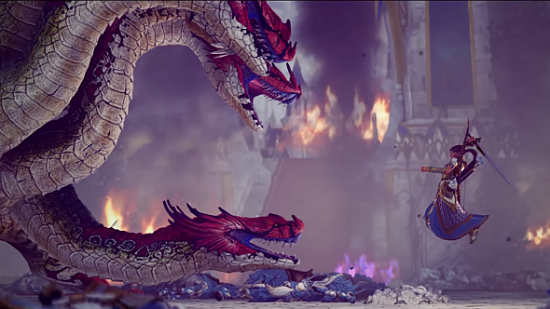It is telling that, on the two occasions I have spoken to Creative Assembly about the Total War: Warhammer series, they haven’t sent a coder or producer or designer. They have instead offered up their lead writer, Andy Hall.
Hall worked at Games Workshop for many years. But as the miniatures company has flipped the Warhammer Fantasy table and started again with its Age of Sigmar reboot, he stayed behind – sticking with the beloved lore and monsters of the Eighth Edition. It is that Old World, typified by shroom-scoffing Night Goblins and explosion-prone Skaven, that powers Total War: Warhammer 2.
Read our review of Total War: Warhammer II here.
“To us, it’s almost like we’re doing another historical Total War,” Hall tells us. “It’s just this one’s in a fictional setting.”
It is not the first time he has used that particular quip, but this time he adds: “Also we can make shit up. If we need a quote, we haven’t got to scour the annals of the Roman Empire.”
We can make shit up. While working on their Warhammer sub-series, this has been Creative Assembly’s grand revelation. Their imminent sequel is “without a doubt” the most story-driven that Total War has ever been.
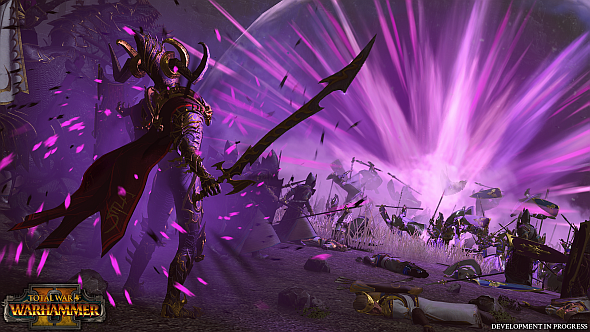
Narrative was one of Total War: Warhammer’s design pillars, right from the beginning – back when the series was just a Powerpoint presentation circulating at Creative Assembly. But this time around it is far more prominent, less dependent on text and more so on CGI cutscenes starring a cast of sage-like characters: the Dark Elf sorceress, Felicion; a Lizardman Skink Priest with a looming Kroxigor companion; and a pair of High Elf Loremasters.
These characters are part of your turn-by-turn experience, popping up in little boxes to give you story quests, and to carry out the Vortex rituals that punctuate Warhammer 2’s campaign. Nowadays, Total War has personalities.
At times, the team have relied on narrative to finesse some of their trickier design challenges. In the first Total War: Warhammer, they could only afford to create one advisor for all of the factions. So Hall turned that into a story point: “Why are all these races talking to this strange, human man? We flipped it around,” he says. Thanks to his web of intrigue, the identity of the mysterious advisor remains the subject of forum threads to this today. So Creative Assembly have doubled down.
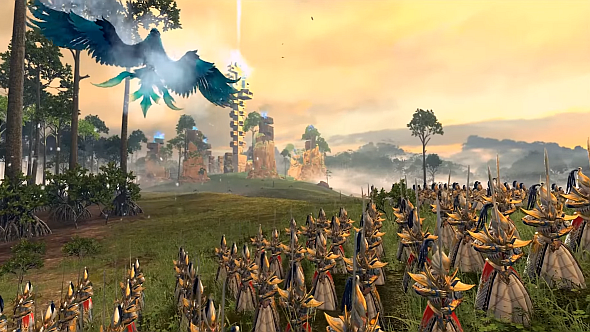
“We wanted to seed the game with as much lore as possible and really immerse the player,” Hall explains. “But with that comes a caveat: how you play Total War can’t be interfered with. We can’t put the player on rails. It has to be a sandbox experience, and you have to be the story.”
This is something Creative Assembly have been thinking an awful lot about. In traditional Total War, you write an alternate history through your actions. How, then, do you introduce another story without overwriting that one?
“I think that’s what we’ve tried very hard not to do,” Hall says. The key to achieving this has been a series of nodal points that structure the game. Every race in Warhammer 2 aims to complete five rituals – ten-turn magic spells cast on the campaign map – and thereby control the Great Vortex. The Vortex is a magical Elven plug hole designed to drain Chaos from the world.
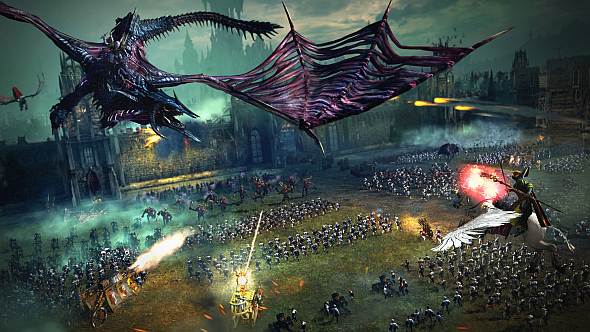
“How you get to those rituals is up to you, and there are many different ways,” Hall notes. “But at some point you’ve got to pass through that threshold, and that’s when we can deliver a bit of story. It’s there to enhance the campaign rather than get in the way.”
Over the course of the 50 or 60 hours in between those punctuation marks – hours spent expanding, making alliances, and accidentally getting into wars – there is still plenty of time for those emergent Total War moments to, well, emerge. And, in fact, Creative Assembly are starting to enjoy the structure a little extra narrative affords them.
When a ritual begins, gaggles of Chaos Warriors and Marauders spawn onto the map – as do ‘intervention’ armies paid for by your rivals. Each time, the defence is centred on three key cities: a white-hot moment of conflict triggered by story concerns.
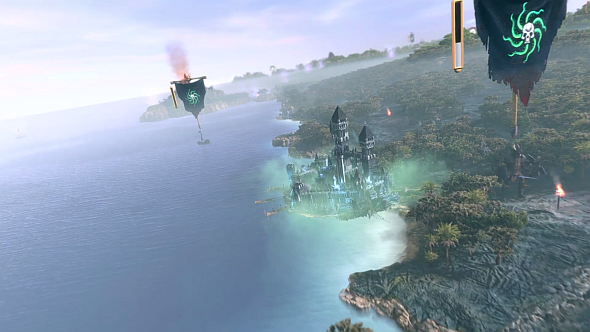
These moments of tension create peaks and troughs that shape the entire campaign. They’re artificial, but they don’t feel that way, because they are wrapped lovingly in a narrative that explains their existence more than satisfactorily.
“That’s what a fantasy element allows us to do,” Hall says. “It allows us to put these big, scary, world-ending MacGuffins in and try different campaign mechanics.”
The first Total War: Warhammer was, just last year, the most story-heavy Total War game ever made. But already it’s proven to be just a stepping stone to a more narrative-driven vision for the series. Will that trend continue?
“I hope so,” Hall muses. “If people say this stuff is in the way, maybe we’ll dial it back. But my gut feeling is that people really enjoy it and actually want more.”
